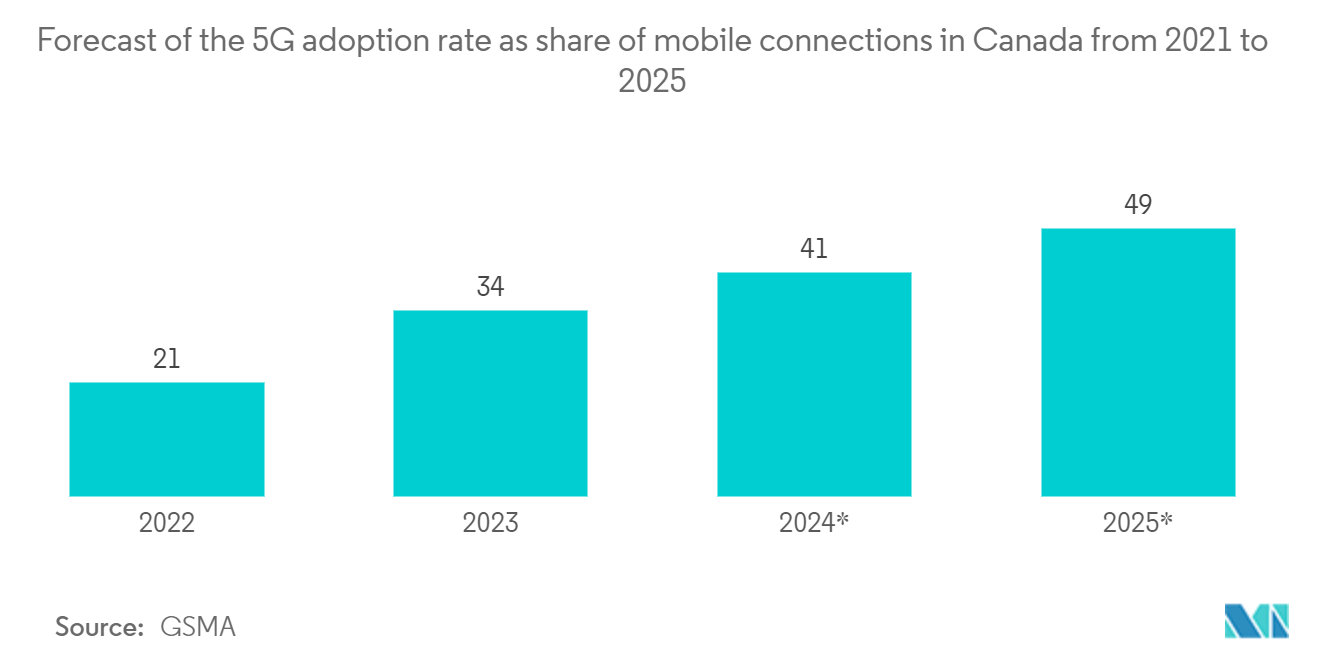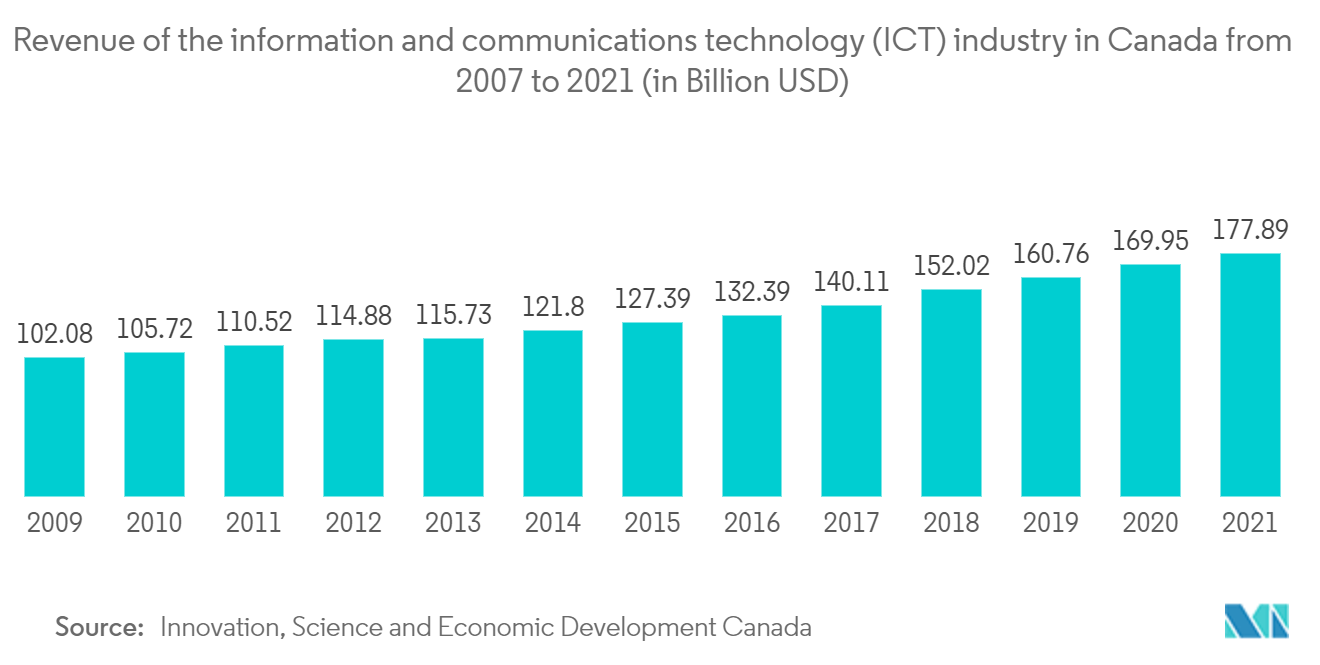Market Trends of Canada ICT Industry
5G Application at the Peak
- Canada is a pioneer in wireless technology. Although the wireless industry dynamics are constantly changing, the introduction of Fifth Generation (5G) networks in Canada is at a tremendously advanced stage. According to a new Accenture report, once 5G is adopted in use cases, cities and rural regions across Canada would gain greatly in terms of quality of life and economy, demonstrating the potential impact it might have on the country with the correct support.
- IoT and 5G are closely related. The internet of things would move at a speed that can only be achieved with 5G. Canada already has mobile internet surfing, various data-driven services, high-bandwidth streaming (YouTube, Spotify, Netflix, etc.), and much more due to 3G and 4G deployments. These items might be regarded as revolutionary when they are made feasible. But the advent of 5G would usher in a transformation affecting nearly every aspect of everyday lives.
- Though the country's population is spread across vast territories, Canada's facilities-based carriers have established one of the world's fastest and most reliable wireless networks, serving every province and territory. According to the independent network analyst Opensignal, Canada is a "4G powerhouse" and is in a superior position to construct future 5G networks than other nations. A CWTA assessment claims that the country could accommodate a 1,000-fold increase in traffic from 2020 to 2030 with the complete rollout of 5G. The amount of energy used shall also be reduced by half from its current level.
- Using cutting-edge 5 G-enabled technology would help other companies reduce their carbon impact. According to a study commissioned by the CWTA , the use of mobile technologies, including 5G, across industries is expected to help Canada achieve up to 23% of its 2030 emission reduction objectives. Furthermore, according to the CWTA, Canadian MNOs could cut their carbon emissions by up to 10 million tons between 2020 and 2030 if 5G is adopted quickly. This notable decline would be caused by greater data efficiency per unit of data transferred that underpins 5G networks.
- 5G systems are already being introduced in areas other than telecommunications networks. Stadiums and factories are already getting their 5G infrastructure in Canada. Retail, network and traffic management are just a few areas where 5G could facilitate improvements, with technologies like driverless vehicles, smart cities, and the internet of things are feasible and normal. These changes would be driven by cutting-edge networks, offering the data capacity, speed, and responsiveness required to link billions of objects.

Rise of Information & Digital Technology and E-commerce
- The Canadian IT sector has expanded twice as quickly as the rest of the economy in the last ten years. Especially the COVID-19 outbreak has brought attention to how useful digital technology is for Canadian companies. Since the pandemic's start, virtual rather than in-person interactions have become more common in work and business. For many organizations, this has persisted into last year as the pandemic highlighted the necessity of adopting digital technology to adjust to new circumstances.
- Additionally, the pandemic's transition towards greater use of digital technology may have permanently altered certain firms. In the second quarter of 2021, the Canadian Survey on Business Conditions (CSBC) found that 19% of enterprises expected always to enhance their online sales capacity once the pandemic was over. As per the Statistics Canada article, e-commerce sales for Canadian companies with five or more employees were USD 398 billion in 2021, an increase of over 30% over the 305 billion dollars made in 2019 (the year before the pandemic started).
- The pandemic has highlighted the necessity of using digital technology beyond e-commerce. As per the Canadian government statistics, compared to 2019, more Canadian enterprises utilized information and communication technology (ICT) in 2021 (85%). Company-wide computer networks (53%) were among the most popular technologies, followed by software tailored to a particular industry (46%) and smart gadgets with Internet access (22%).
- Last year, an overwhelming majority of Canadian firms (89%) had at least one form of digital presence, a little improvement over 2019 (85%). Social media accounts (61%), business websites (78%), and email marketing (19%) are examples of these digital presences. Three out of every five firms (59%) that had a website also had a mobile-friendly one. Canadian firms spent almost USD 6.5 billion on internet ads in 2021, according to SDTIU's inaugural measurement. While it is impossible to directly compare overall advertising expenditures between 2021 and 2019, more Canadian firms reported using paid web advertising in 2021 (24%) than in 2019 (23%).


